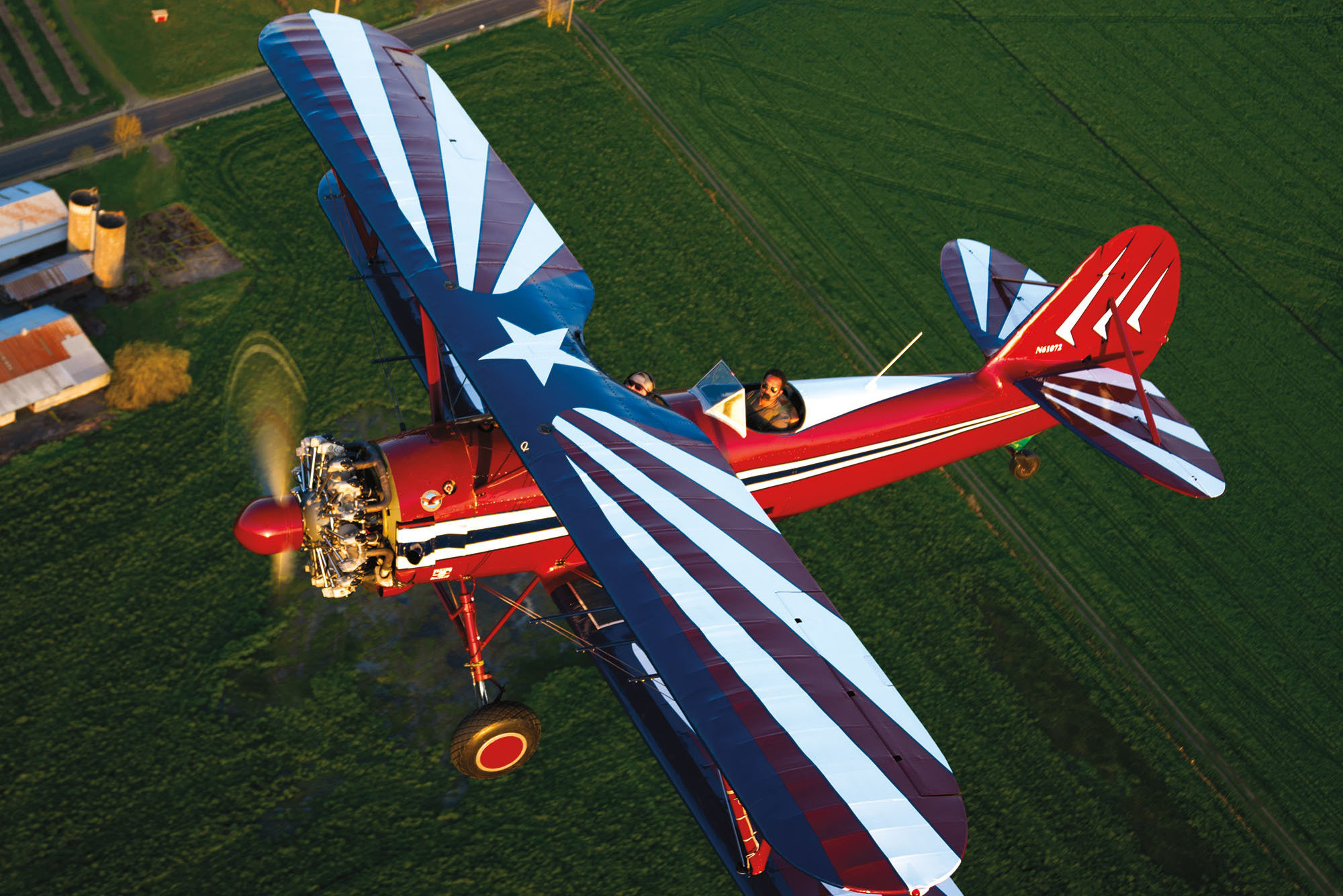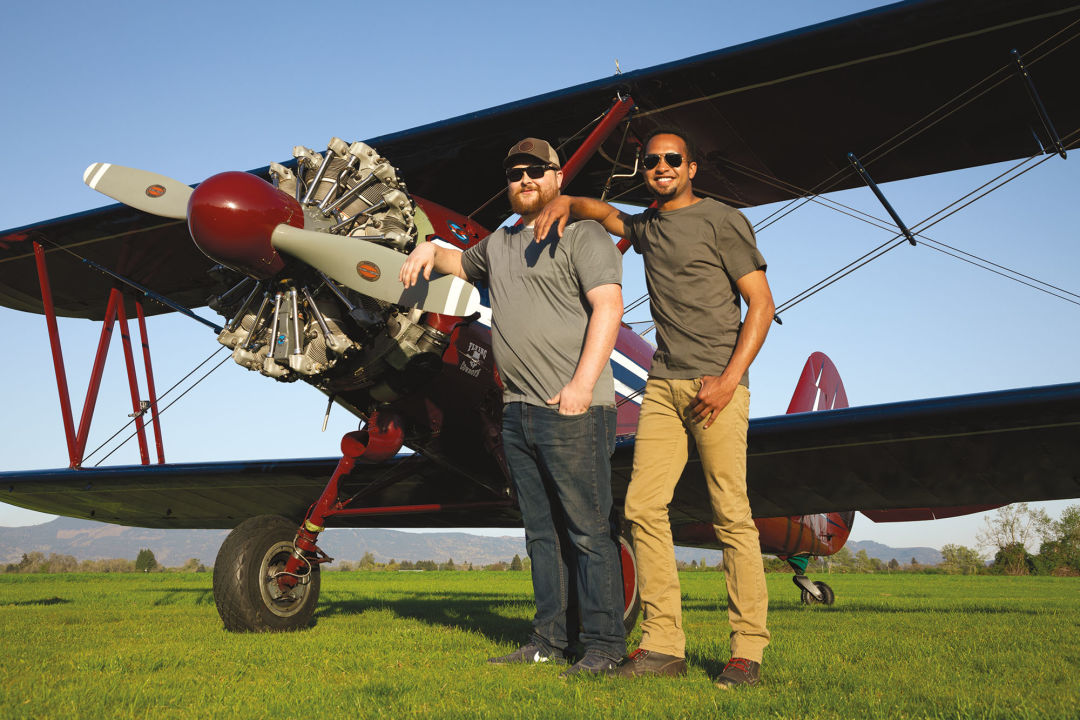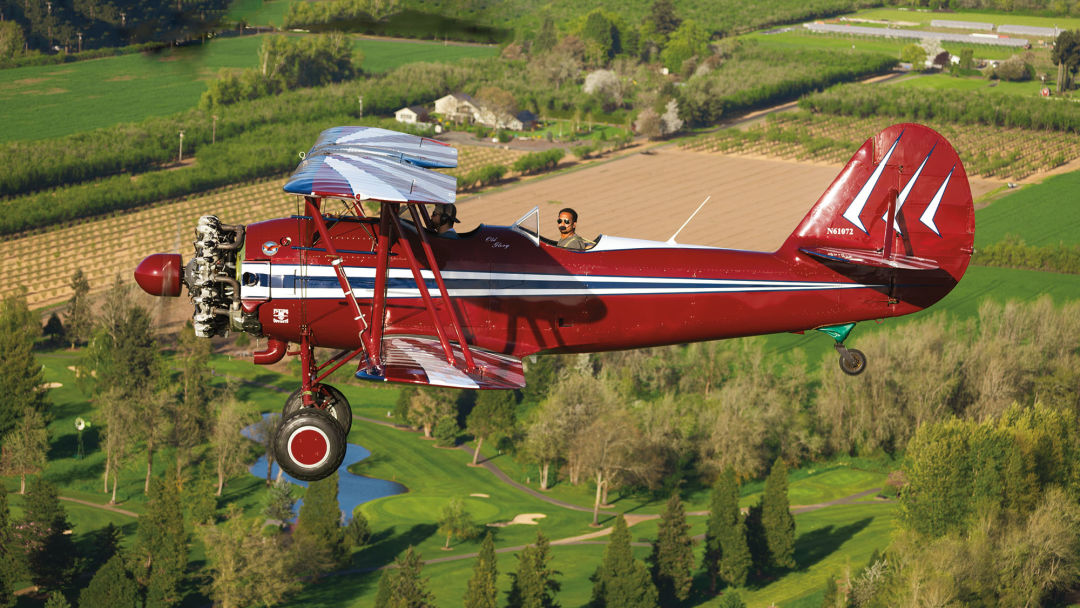
Two Oregon Pilots Are Preparing for a 9,000-Mile Flight from Patagonia to Florida—On Vintage Airplanes
Between the legroom, smells, crowded airports, and weather delays, it’s easy to see why so many people are pessimistic about flying. The days of getting a deck of cards or a peek in the cockpit on a commercial flight lie behind us. Even in the world of private aircraft, increasing costs of fuel, insurance, and aircraft acquisition make the dream of flying your own plane ever more difficult. But two Oregon pilots are experts at keeping the fun in flying, and their biggest adventure could come next fall.
Two years ago, Eugene-area pilots Kyle Bushman and Bryan Harper won one of 15 coveted spots (out of nearly 700 entries) for an event called Ushuaia2USA, a 9,000-mile journey from Patagonia at the tip of South America to Lakeland, Florida, traversing 19 countries in 42 days. Put on by Europe-based organizers of long-haul vintage air rallies, the event is meant to emulate the experiences of trailblazing pilots in the 1920s and ’30s, in the same type of aircraft, with the organizers covering the cost of travel, insurance, and more. (The same group’s Crete2Cape rally, which spanned the length of Africa from the Mediterranean to the Cape of Good Hope, had pilots landing 80-year-old aircraft among the pyramids at Giza and soaring over Victoria Falls.) Originally set for March 2018, the Ushuaia2USA rally was postponed eight months till the next “good weather window.” (Organizers cited a lack of funding and prep time.) Then it was postponed again. It’s now set for next November, though there are doubts it will ever happen at all.
For Bushman and Harper, though, the wait just means more time to get comfortable with Old Glory, the N3N biplane Bushman bought for the race from “Wild” Bill Robinet, a longtime pilot and author of the autobiography By the Skin of My Teeth: A Cropduster’s Story. Robinet had restored the plane in 2000 but, now in his 80s, wasn’t able to fly it much. Made by the US Navy in Philadelphia in the 1930s and ’40s, the N3N was a training aircraft during World War II. “They were essentially made out of leftover dirigible parts from World War I. The navy needed aircraft, and they weren’t getting them when they wanted them, so they said, ‘Screw it’—if they can build their own ships, they can build their own airplanes,” says Harper. “The only government-engineered aircraft known in US history is the navy N3N—its history is pretty stinking cool.” By the ’60s, most N3Ns had been sold as surplus and were in use spraying crops, which is how one eventually ended up in Eugene with Robinet.

Kyle Bushman (left) and Bryan Harper with Old Glory
Image: Rick A. Brown
“It always screws the towers up because they think we’re a navy airplane coming in,” Bushman says with a chuckle. (Pilots approaching an airport announce their plane by manufacturer, followed by the registration number, so Old Glory always starts “Navy, November, six....”) Of the 800 or so of this model that were built, Bushman and Harper reckon 20 or 30 are still in the air.
“Airplanes are designed now to be easier to fly, with autopilot and all these different things, so when you get in an older airplane like that, it’s like, ‘Nope, you have to pay attention to me the whole time,’” says Bushman, who grew up just southeast of Eugene in Pleasant Hill and started flying at age 15. When he finished Lane Community College’s aviation maintenance program at 20, he found out his first-choice employer, PJ Helicopters of Red Bluff, California, didn’t hire any mechanics under 21 for insurance reasons. So instead of fixing helicopters, he found a part-time job with a legendary local vintage aircraft expert. Within a few years he became owner and president of the company, Ragwood Refactory. At age 26, he’s an international authority on vintage aircraft restoration.
“I’ve been all over the world. I’ve been to Malaysia; I’ve been in Japan working on planes,” he says. “If you can work on an antique airplane like that and do it nicely, there’s a lot of guys that want you to do it.”
From Junction City, Harper is a fifth-generation filbert farmer and an expert on regional agricultural issues. He was in the middle of a farm bureau meeting in Pendleton when Bushman called to tell him about Ushuaia2USA—he was most definitely in. “What an opportunity,” Harper says, “to fly from the southernmost airport in the world!”
Part of growing up on the farm was growing up in the family airplane, a classic Piper Cub. A talented athlete who was offered track and field scholarships, he tried professional flight training at Embry Riddle in Daytona Beach but, as an Oregon kid, felt like a fish out of water. Instead, he earned his private pilot’s license at Lane Community College and got a psychology degree at University of Oregon. Now 31, he has a Cessna 185 and a North American T-6 Texan. He’s also a co-owner and manager of Strauch Field, a small private airport once run in part by Hank Strauch, a former World War II mechanic whose large collection of planes included a UBF2-Waco like the one Harrison Ford hops into at the beginning of Raiders of the Lost Ark. Harper says he learned a lot about old planes from Strauch, who stressed that pilots should fly a lot of different kinds of planes to keep from getting complacent, and, before a flight, “check the shit that’s gonna kill you,” Harper says, “every stinking time.”
Harper regularly flies himself to Southern California to see his girlfriend, who is also a pilot. “It’s about the same as a SkyWest flight,” Harper says of the fuel cost, “but it’s 100 percent worth it for the adventure.”

Bushman and Harper log some time in the air above Shadow Hills Country Club south of Junction City.
Image: Rick A. Brown
The adventure is something they share: by giving friends a ride, appearing at fly-ins and airshows around the country, or, in Bushman’s case, making smiley faces in smoke trails for the Fourth of July or above his dad’s house on Father’s Day. “They actually come out pretty good,” he says.
“Especially with the aircraft we have, one of the best, most rewarding parts is sharing it with people who say, ‘I never thought this would be possible,’ or ‘My great-great-grandfather flew in this sort of thing,’” says Harper. “It’s great to open the door to people, where it probably would never have been on their radar. You belong, too. You can be here, just like us. I was a curly-haired little farm kid, lucky to grow up with a little J-3 Cub.”
Bushman agrees, noting that a used plane that can fly four friends to the coast in 15 minutes often costs less than a new truck. “It’s way more tangible than people think.”
